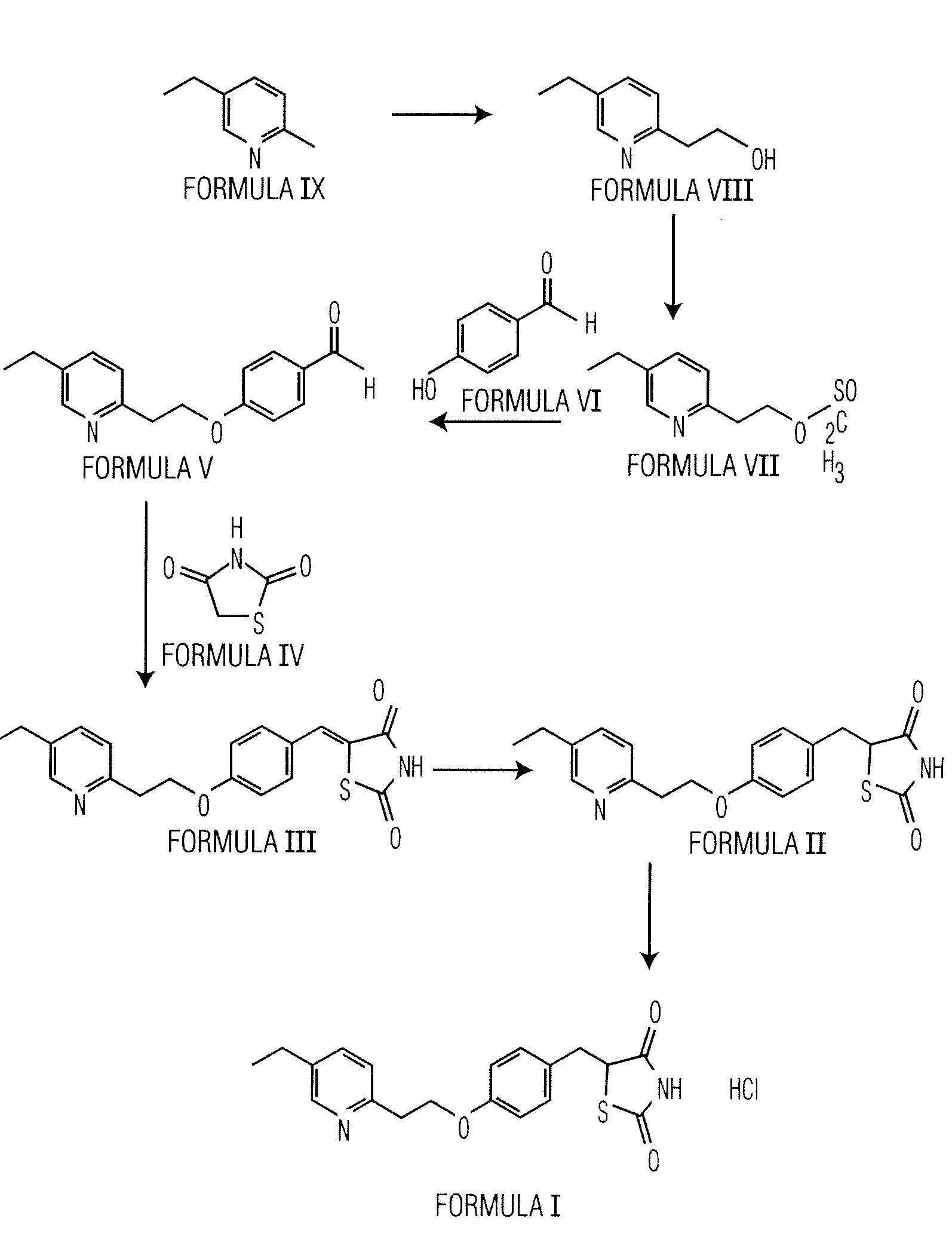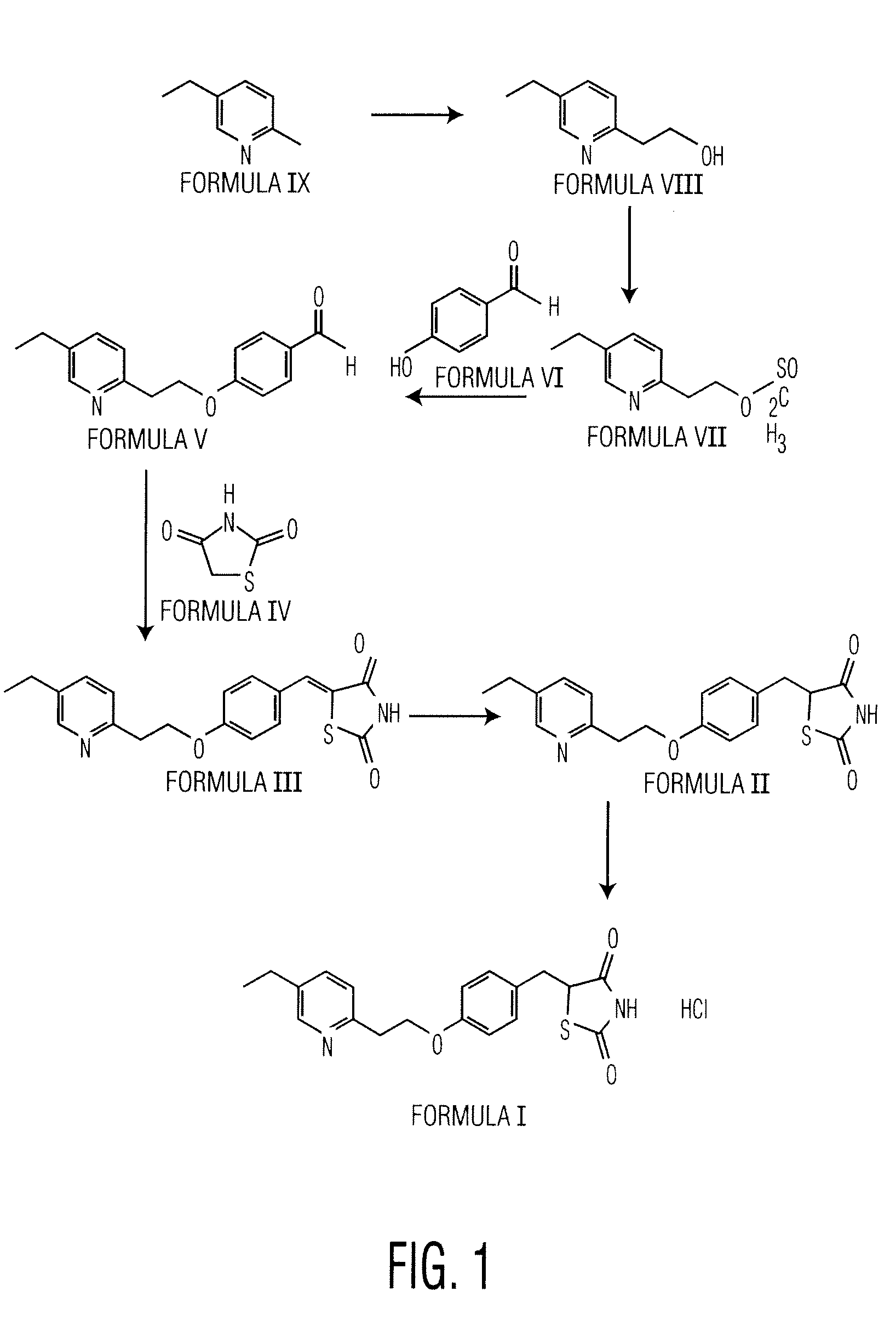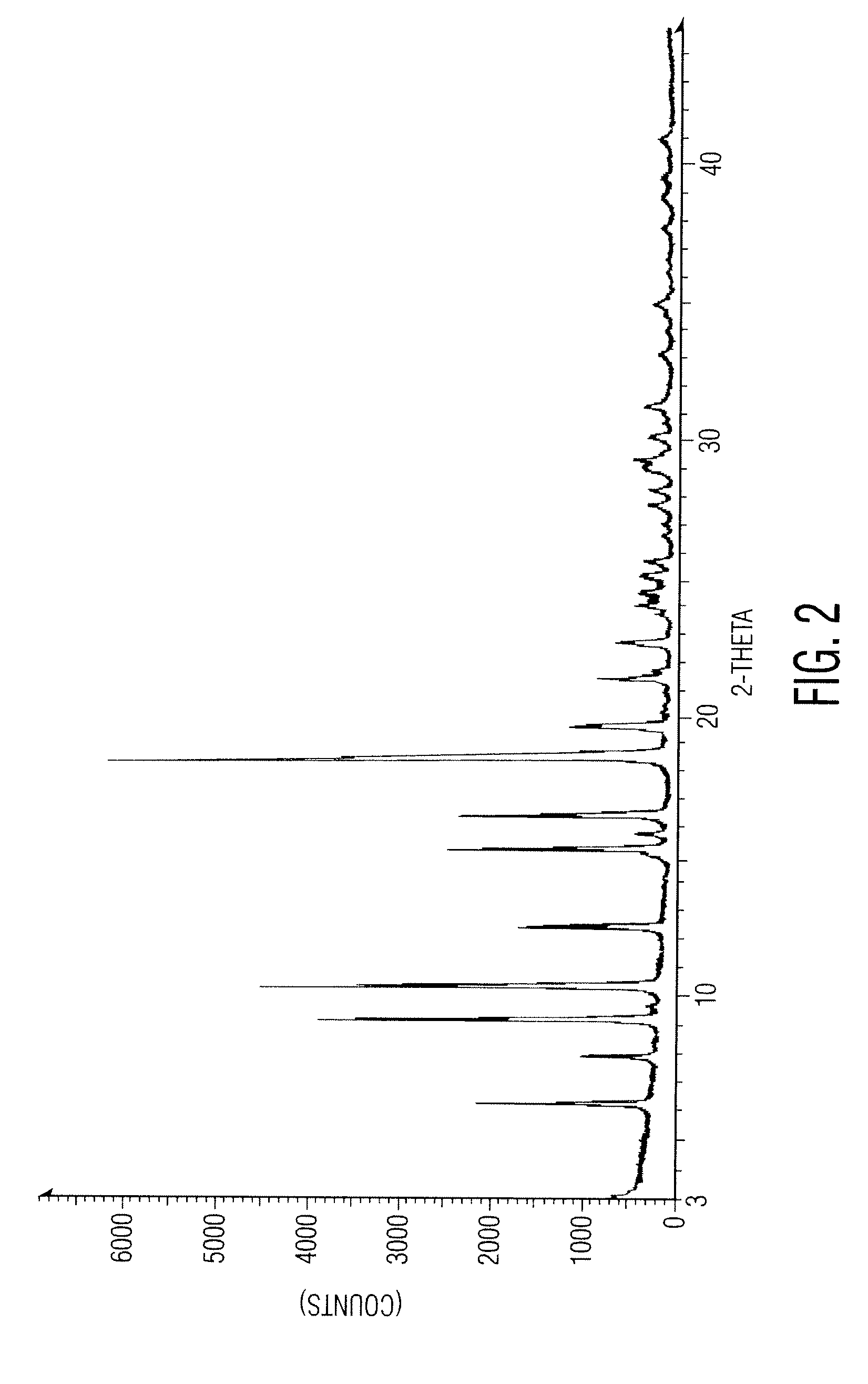Processes for preparing pioglitazone and its pharmaceutically acceptable salts
a technology of pioglitazone and pioglitazone, which is applied in the field of processes for preparing pioglitazone and its pharmaceutically acceptable salts, can solve the problems of serious disadvantages of the above-mentioned processes, and achieve the effects of simple, cost-effective and easy operation on commercial scal
- Summary
- Abstract
- Description
- Claims
- Application Information
AI Technical Summary
Benefits of technology
Problems solved by technology
Method used
Image
Examples
example 1
Preparation of 2-(5-Ethyl-2-Pyridyl)Ethanol (Formula VIII)
[0056]5-Ethyl-2-methyl pyridine (200 g) of Formula (IX) and 37% aqueous formaldehyde solution (134 g) are charged into an autoclave and heated to about 150° C. to about 160° C. The resultant reaction mass is maintained at that temperature for about 3 hours to complete the reaction. The reaction mixture is then cooled to about 25° C. The obtained reaction mass is distilled for about 500 to about 800 mm Hg at about 80° C. to afford 58 g of the title compound.
example 2
Preparation of 5-[4-[5-Ethyl-2-Pyridyl)Ethoxy]Benzilidene]-2,4-Thiazolidinedione (Formula III)
[0057]2-(5-Ethyl-2-pyridyl)ethanol (50 g) and toluene (200 mL) are charged into a round bottom flask and stirred for about 10 minutes at about 25° C. followed by addition of triethyl amine (57.6 mL). Methane sulfonyl chloride (42.5 g) is added slowly through a dropper for about 25 minutes at about 25° C. and stirred for about 3 hours at about 25° C. The separated solid is filtered and washed with toluene (60 mL). The obtained filtrate is washed with 4% sodium bicarbonate solution. The layers are separated and aqueous layer is extracted with toluene (50 mL). The organic layers are combined and washed with water (2×60 mL). The resultant organic layer is charged into a round bottom flask followed by addition of 4-hydroxy benzaldehyde (43.2 g) and potassium carbonate (80 g) and heated to about 90° C. for about 14 hours and then cooled to about 50° C. The obtained reaction mass is quenched by ad...
example 3
Preparation of 5-[4-[5-Ethyl-2-Pyridyl)Ethoxy]Benzyl]-2,4-Thiazolidinedione (Formula II)
[0060]5-[4-[2-Ethyl-2-pyridyl)ethoxy]benzilidene]-2,4-thiazolinedione (20 g), methanol (40 mL), water (140 mL) and 4% sodium hydroxide solution (26 mL) are charged into a round bottom flask and stirred for about 10 minutes. Cobalt chloride hexahydrate (0.2 g) and dimethyl glyoxime are dissolved in dimethyl formamide (30 mL) and added slowly for about one hour at about 20° C. to about 35° C. Mixture of sodium borohydride (3.7 g dissolved in water 40 mL), and 4% sodium hydroxide solution (9 mL) is added slowly about 3 hours at about 20° C. and stirred for about 3 hours.
[0061]Charcoal (1 g) is added into the reaction mass and stirred for about 30 min at about 20° C. The reaction solution is passed through high flow bed. The resultant filtrate is charged into a fresh round bottom flask and the pH of the reaction solution is adjusted to about 6.5 to about 7.0 using acetic acid (8 mL) and it is stirred...
PUM
 Login to View More
Login to View More Abstract
Description
Claims
Application Information
 Login to View More
Login to View More - R&D
- Intellectual Property
- Life Sciences
- Materials
- Tech Scout
- Unparalleled Data Quality
- Higher Quality Content
- 60% Fewer Hallucinations
Browse by: Latest US Patents, China's latest patents, Technical Efficacy Thesaurus, Application Domain, Technology Topic, Popular Technical Reports.
© 2025 PatSnap. All rights reserved.Legal|Privacy policy|Modern Slavery Act Transparency Statement|Sitemap|About US| Contact US: help@patsnap.com



